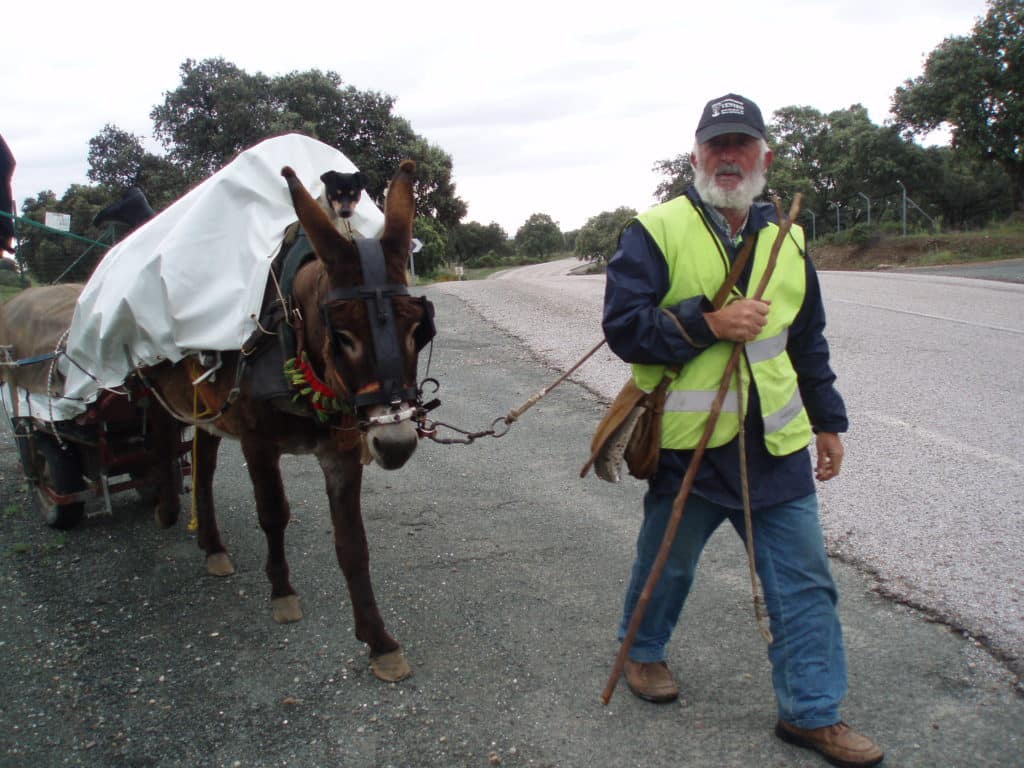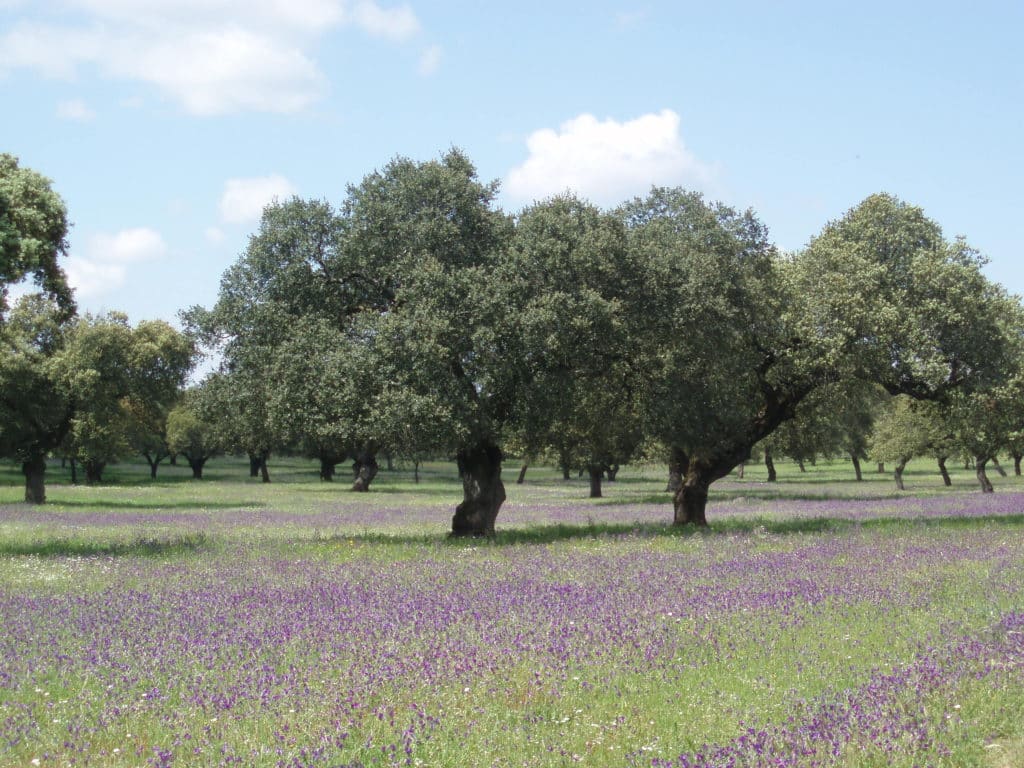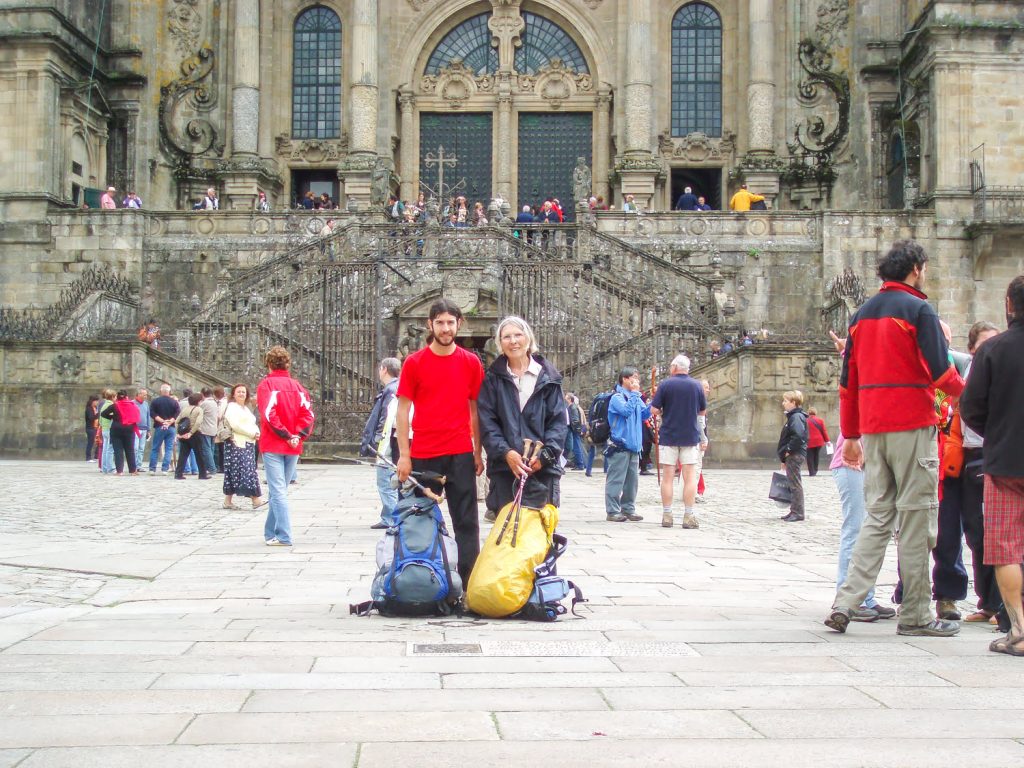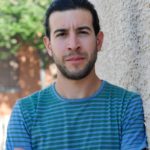Not a morning passes when I don’t hear the oop oop oop of the hoopoe. Some days I walk through vineyards, other days through centuries-old olive groves.
Usually the camino follows dirt roads, but at times I suffer the unforgiving impact of the pavement. Occasionally my way narrows into single-track, and I savor those moments. Wildflowers saturate the Andalusían spring. The waves of orange, yellow, and red make me smile when the pain in my feet demands otherwise.
When I arrive in Extremadura, free-range pig farms and cork forests compose the land. Later comes the monotony of the plains and the burn of the mountain climbs. I always pass cow pastures, and sometimes a toro stands alone on the opposite side: the road cutting the farm in two.

I can’t fully appreciate Spain’s history until I cross Merida’s 60-arch Roman bridge and slip underneath its triple-tiered aqueduct. Since I am an American, these are the features that imprint my memory and are too often taken for granted by Europeans who have grown up with them. In Salamanca, I ponder the generations of academics who have toiled inside the high walls of the university’s oldest buildings.
In Galicia, I pass through stone-built villages: Laza, Cea, and Laxe, so old they are inseparable from the landscape. The villages here are situated closer together than those in the regions I’ve come from. The green rolling hills are cut into lots by waist-high rock walls. The aging faces and lack of cars expose the sharp contrast between the outdated countryside and the vibrancy of modern Madrid.

I walk to experience life at walking pace. I catch what those traveling by car and tour bus miss. Moving at this speed I feel Spain in my tired joints, I hear Spain in the ringing of church bells, I taste Spain in each of the changing regional delicacies as I make my way north from Sevilla on the Via de la Plata.
Instead of pulling over to a scenic view point for five minutes, the view follows me for five miles. I see Spain unfold in front of me—the landscape picture book of back roads, front roads, agriculture, mountains, meseta, and lavender-lined footpaths. Time passes along the way: 38 mornings of café con leche and 38 evenings of tintos y tapas.
When I walk I become part of the environment. When the wind blows and the sky pours I become cold and wet. The warm Iberian sun dries me back to warmth and the thick oak groves shade my rest breaks when it becomes too dominant.

I am happy to say buenos dias to the townspeople in each community I pass through. I appreciate their brief hospitality and the fleeting moments we cross paths. They smile: surprised that I’m so young and walking alone.
I have always been told that the journey is more important than the destination. So, nearing the end, I try to downplay the significance of my arrival at the cathedral in Santiago. But I can’t convince myself that tomorrow will not be extraordinary.
Santiago de Compostela is a special place, and after walking almost six weeks to get there, the magnitude of my arrival will only be amplified by the journey that got me here.


Stephen Bugno walked the 1000 km from Sevilla to Santiago de Compostela on the Via de la Plata in the spring of 2008. His writing has appeared in The San Francisco Chronicle, The Philadelphia Inquirer, Transitions Abroad, and the Matador Network.





Me encanta como escribes Stephen. Ahora, tengo mas ganas que nunca de hacer el Camino de Santiago.
Great writing, Stephen. Not sure if you will remember me, but I was at La Alberca / Pueblo Ingles with you summer before last. Do you recall the last night, when there were three of us who stayed behind in the village for the local fiesta … and walking back to PI along that dirt road under the moon?
Last summer I returned to Spain, traveled throughout Galicia with my husband for a couple weeks – it was amazing to be on the winding back roads, lost as much of the time as knowing where we were. The Celtic influence, and the old Gallego villages … I will never forget any of it.
Pingback: Blogger Relay